Directions (1-5): Given below is the table which shows the various items purchased by shopkeeper from wholesaler, % markup price per kg by shopkeeper, List price per kg marked by shopkeeper and % discount offered by shopkeeper on list price.
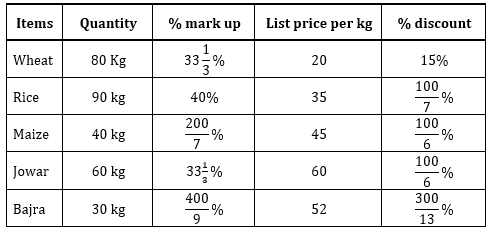
Q1. What is the ratio of total profit obtained on selling whole quantity of rice to the total profit obtained on selling whole quantity of Maize.
(a) 3 : 4
(b) 7 : 2
(c) 9 : 2
(d) 5 : 2
(e) None of these
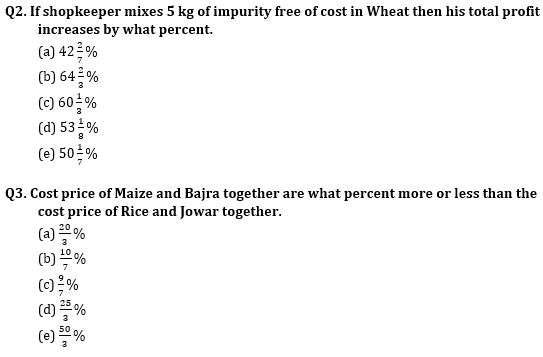
Q4. If 12 kg of Jowar is spoiled then by what percent be should increase his initial List price per kg so that there is no profit and no loss.
(a) 12.5%
(b) 22.5%
(c) 8.5%
(d) 16.5%
(e) 13.75%
Q5. If shopkeeper uses faulty weight of 800 gm instead of 1 kg while selling than what will be the total profit in selling Jowar
(a) 850
(b) 625
(c) 1250
(d) 1050
(e) 900
Directions (6–10): Given below table shows total application of five different exams filled by online mode, percentage of application filled by offline mode. Also, table shows Percentage of application rejected (online mode + offline mode) and percentage of applicants appeared in each exam. Read the table carefully and answer the questions.
Note – Total application = Number of applications filled by online mode + Number of applications filled by offline mode
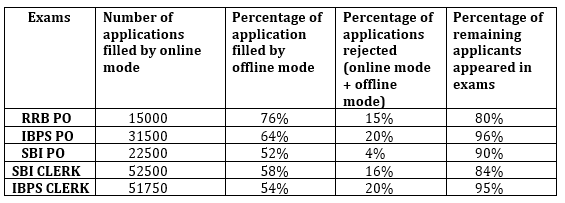
Q6. Out of total rejected applications in RRB PO & SBI CLERK exams ratio between applications rejected of online mode to offline mode is 2 : 3 and 3 : 7 respectively. Find difference between total applications rejected of online mode and total applications rejected of offline mode in these two exams?
(a) 9875
(b) 9865
(c) 9878
(d) 9855
(e) 9845
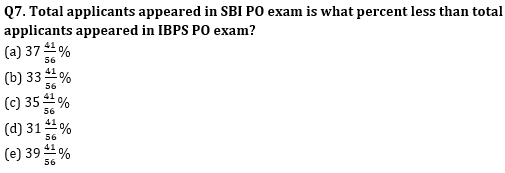
Q8. Out of total appeared applicants in RRB PO & IBPS CLERK exams 1.8% & 2% applicants get final selection respectively. Find total applicants who get final selection in these two exams?
(a) 2425
(b) 2455
(c) 2435
(d) 2475
(e) 2415
Q9. Out of total rejected applications in SBI PO & IBPS PO exams ratio between applications rejected of online mode to offline mode is 7 : 8 and 11 : 14 respectively . Then find total applications rejected of offline mode in these two exams is what percent of total applications rejected in SBI CLERK exam?
(a) 45.2%
(b) 47.2%
(c) 54%
(d) 49.2%
(e) 51.2%
Q10. If 15% & 24% of total applications filled by offline mode in RRB PO & SBI CLERK respectively exams are rejected, then find the average number of applications rejected, which filled by online mode in these two exams?
(a) 2475
(b) 2425
(c) 2455
(d) 2465
(e) 2485
Directions (11-15): Read the given information carefully and answer the following questions.
Sony Company has five factories with different capacities of producing earphones every month (working days for every month may vary for each factory). In the production process, there are only three types of cost occurs i.e. Raw material cost, Labor cost and Selling cost which are different for different factories. Two units of earphone are produced per day by each factory.
Profit/unit= Selling price-(Raw material cost+ Labor cost+ Selling cost)
Selling cost=Packaging cost+ Transportation cost
Sales Margin= (Profit/unit)/ (Selling price/unit)
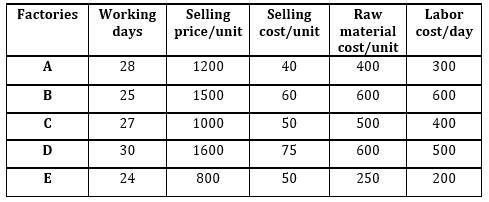
Q11. Company used new technology which increased the production by 50% and labor cost by 25% per day for every Factory then find the total profit earned by factories C and D together are approximately what percent more or less than profits earned by Factory A and B together?
(a) 15%
(b) 5%
(c) 10%
(d) 20%
(e) 25%
Q12. A store ordered 80 units of pre-packaged earphone and will also be picked up by that store in 20 days to avoid transportation cost. To deliver this order Company can use multiple factories for production. Find which of the following options will ensure maximum profits for the company?
(a) Factory D, Factory B & Factory A
(b) Factory A & Factory D
(c) Factory A & Factory B
(d) Factory B, Factory D & Factory C
(e) Factory D & Factory E
Q13. For factory B, C, D and E, which of the following order is correct regarding Sales Margin?
(a) D>C>E>B
(b) C >D=B>E
(c) E=D>C>B
(d) E>D>B>C
(e) C>D>E>B
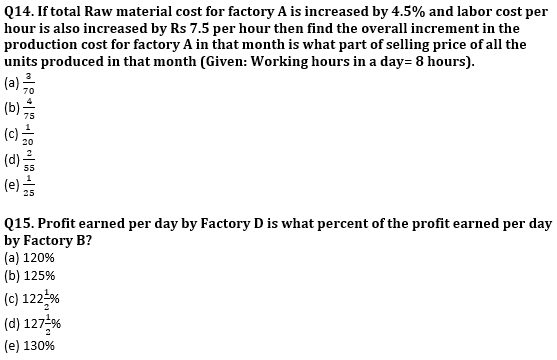
Solutions


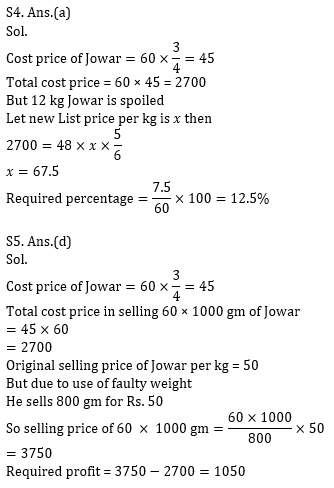





Click Here to Register for Bank Exams 2020 Preparation Material

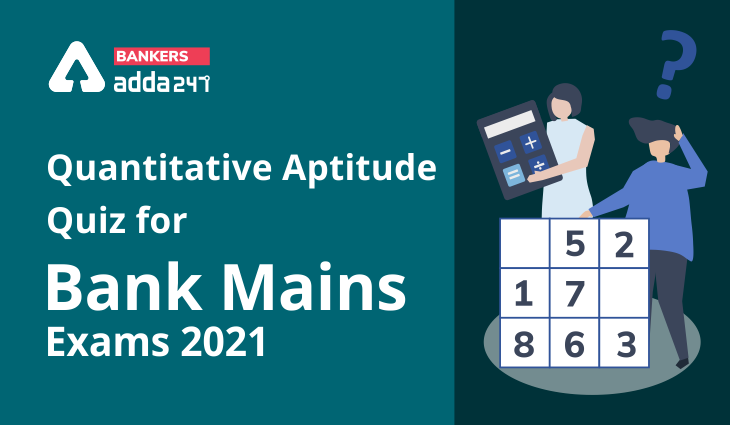


 GA Capsule for SBI Clerk Mains 2025, Dow...
GA Capsule for SBI Clerk Mains 2025, Dow...
 The Hindu Review October 2022: Download ...
The Hindu Review October 2022: Download ...
 Fillers Questions for SBI PO Mains Exam ...
Fillers Questions for SBI PO Mains Exam ...





